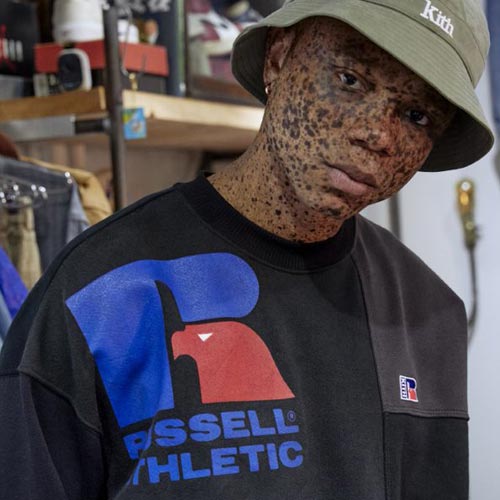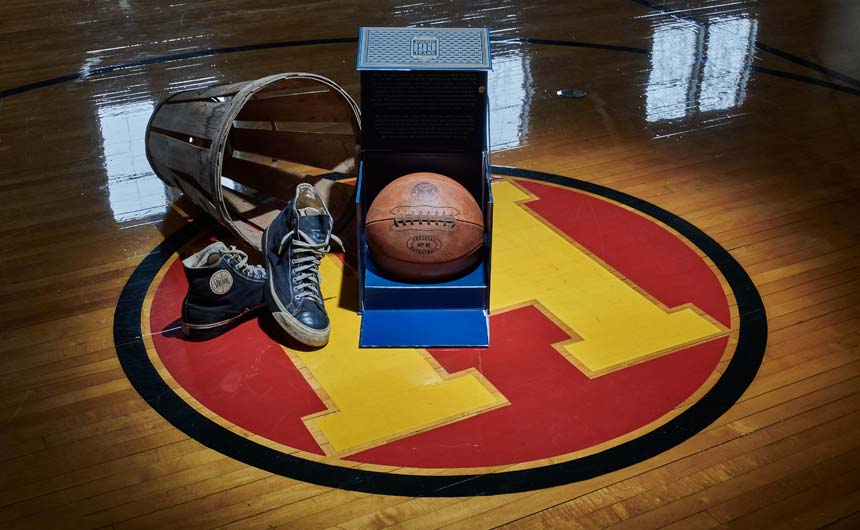Director of licensing, Mandy Emedi talks collaborations, anniversary editions and why heritage runs deep at Fruit of the Loom.
A walk through our company archives is nothing short of awe-inspiring.
Vanity Fair is the ‘baby’ of our brand portfolio, having just celebrated its 100-year anniversary in 2019. Russell Athletic, known as the inventor of the sweatshirt, was born on the field of play in 1902. Spalding has its origin in 1876, considered to be the first sporting goods company. And Fruit of the Loom dates back to 1851, thought by many to be the first brand. Full stop.
Since their very beginnings, product innovation – newness – drives each brand in the Fruit of the Loom, Inc. portfolio. Innovations in apparel fit, fabrication, and design techniques have fueled growth for decades. State-of-the-art R&D supports ongoing advances in basketball equipment and the sporting goods sector as a whole. We endear ourselves to our consumers by delivering solutions to enrich their every day.
Complementing our current consumer-led product development, interest in our brands is also driven by the trend towards heritage and nostalgia. This is particularly evident in the fashion markets.
The heritage and nostalgia trend has been on the rise for several years, and it shows no sign of slowing. The frenetic pace of our world can leave our heads spinning. Sprinkle in the ever-jarring news cycle and toss in a once-in-a-century global pandemic. It’s no wonder consumers covet the known, finding comfort in trusted steadfastness.

Nostalgia, that longing for the ideal of simpler times (even if that ‘simplicity’ is only in our mind’s eye) is a powerful motivator. So, how do we marry innovation and heritage?
Our innovations are carefully crafted under the auspices our brands’ great history. It’s both an honour and a tremendous responsibility to tell our brand stories in new, exciting ways. Remaining authentic to our brands’ DNA is key.
As we seek to build connections from our past to our future, we ground ourselves in the core tenets of our brands: our defining purpose. We look for ways to marry our unwavering brand identities with modern and culturally-relevant elements. We know we’ve hit the sweet spot when an activation appeals both to those who’ve known our brand forever and to new consumers, alike.
Collaborations have been a very successful vehicle for us. One of our notable recent executions is our Russell Athletic collaboration with designer Ronnie Fieg’s KITH brand. According to Fieg, “The idea stemmed from my nostalgia for retro athletics and what it was like to shop from catalogues when I was growing up. When thinking about US heritage athletic brands that helped inspire this concept, my mind always ran to Russell.”
The Russell Athletic x KITH collection has great logo play, resulting in fresh notoriety for the brand in the luxury fashion space.

Anniversary editions are another heritage play. To mark the 125-year anniversary of the Spalding brand, for example, we introduced a limited-edition remake of the original basketball. Complete with chunky leather stitches that immediately evoke the very beginnings of the sport, the ball highlights the innovation and craftsmanship that are Spalding hallmarks.
Using our logos as a fashion element allows us to showcase our brands in new and sometimes unexpected channels. Fruit of the Loom has enjoyed placement over the past couple of years at retailers like PacSun and Urban Outfitters. Bold heritage logos pique interest outside of traditional channels and current-day logo executions. Some consumers may be drawn to the nostalgia of the logo, while others’ initial appreciation may be for the fashion design. In either case, this endears the brand to current and new consumers, alike.
No matter the activation, heritage runs deep at Fruit of the Loom, Inc.
Thoughtfully executed with modern-day innovation, it helps hallmark our place in today’s culture.
Fruit of the Loom is exhibiting at all three regional events at Festival of Licensing. Content from the Europe week is available to view on demand until early November, while Americas begins next week (October 20-22).





























